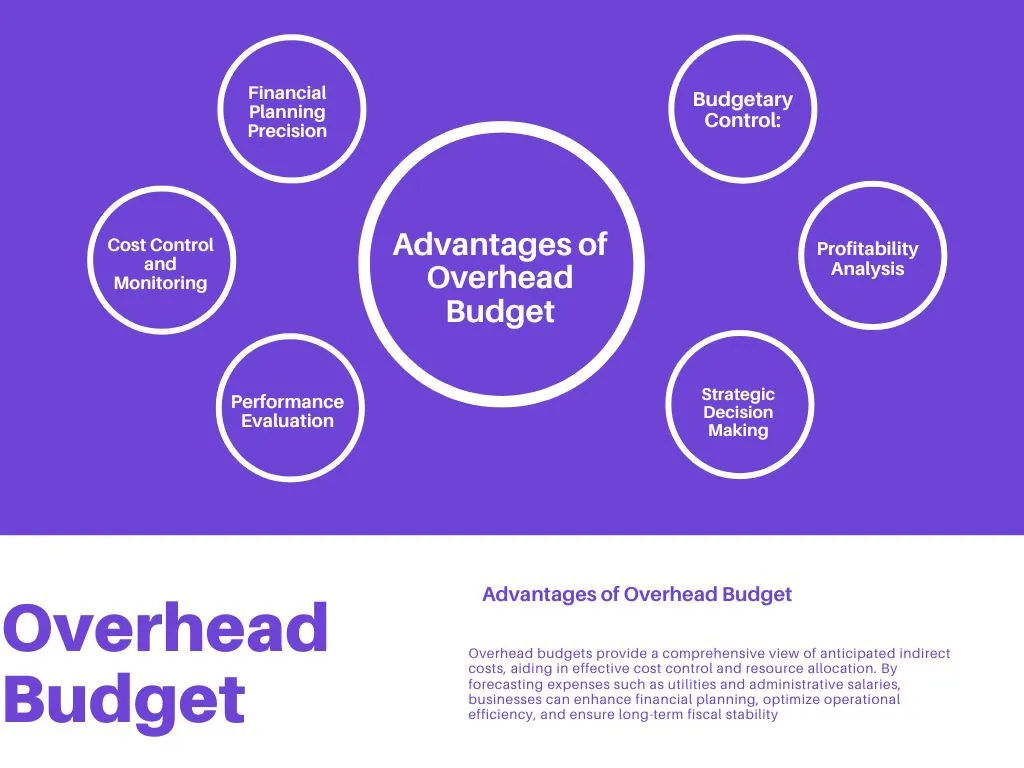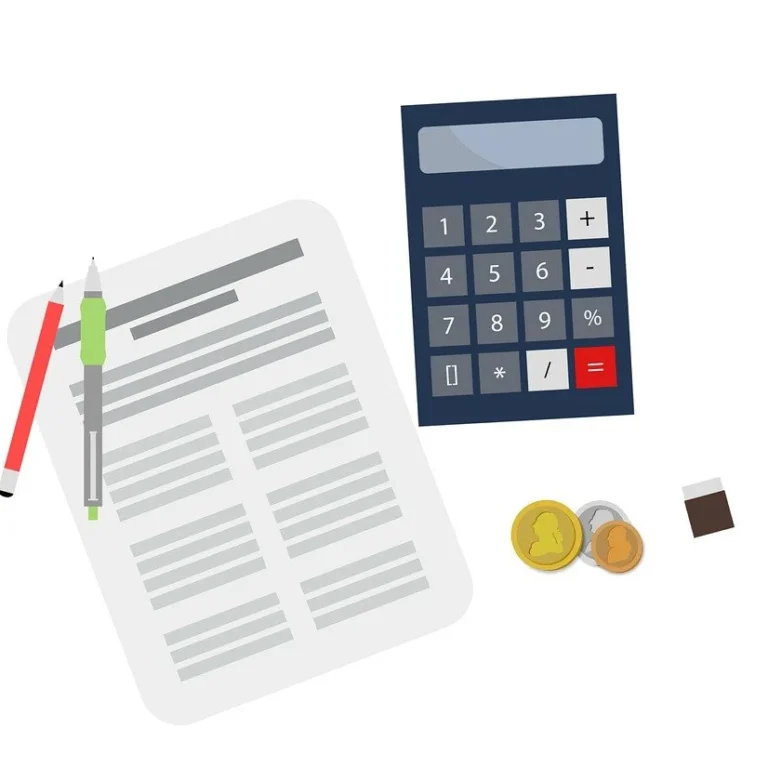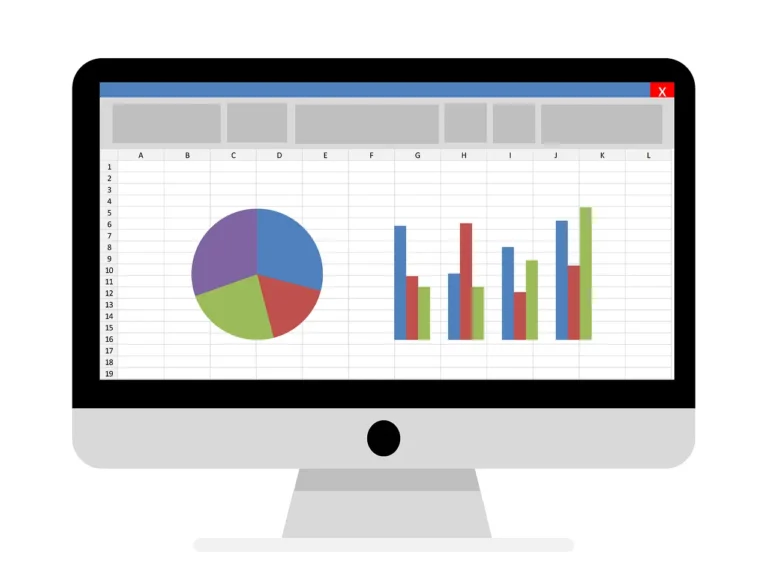Definition of Overhead Budget
An Overhead Budget is a financial plan that meticulously outlines and forecasts the indirect costs a business incurs to operate, excluding direct production expenses. It encompasses various fixed and variable expenses such as rent, utilities, administrative salaries, and maintenance. The primary purpose of an Overhead Budget is to provide a comprehensive overview of non-production expenditures, aiding management in effective resource allocation and cost control.
By forecasting and allocating these indirect costs, organizations can enhance financial planning, optimize resource utilization, and ultimately improve overall operational efficiency. This budgeting tool is invaluable in strategic decision-making, ensuring businesses maintain financial stability while pursuing their objectives.
Components of the Overhead Budget
Indirect Labor Costs:
Encompassing salaries and wages of employees not directly involved in the production process, such as administrative staff and maintenance crews.
Utilities and Overhead Expenses:
Including costs associated with essential services like electricity, water, heating, and other facility-related expenditures.
Depreciation:
Reflecting the allocated cost of the wear and tear on capital assets, providing a realistic assessment of the value reduction over time.
Rent and Lease Expenses:
Covering expenditures for the use of physical space, whether it be manufacturing facilities, offices, or storage areas.
Insurance Premiums:
Involving the costs of insurance policies to safeguard against potential risks and liabilities in the operational environment.
Taxes:
Accounting for various taxes applicable to the business, such as property taxes, business taxes, and other regulatory obligations.
Supplies and Consumables:
Encompassing the costs associated with day-to-day operational necessities, including office supplies, cleaning materials, and other consumables.
Maintenance and Repairs:
Involving expenses related to the upkeep and repair of machinery, equipment, and facilities to ensure smooth and efficient operations.
Allocated Overhead for Production Units:
Determining the portion of overhead costs allocated to each unit of production, providing insights into the cost per unit.
Research and Development Costs:
Including expenses associated with innovation and the development of new products or processes, reflecting the commitment to continuous improvement.
Format of the Overhead Budget
| Overhead Category | Budgeted Amount ($) | Actual Amount ($) |
|---|---|---|
| Indirect Labor Costs | [Enter Amount] | [Enter Amount] |
| Utilities and Expenses | [Enter Amount] | [Enter Amount] |
| Depreciation | [Enter Amount] | [Enter Amount] |
| Rent and Lease Expenses | [Enter Amount] | [Enter Amount] |
| Insurance Premiums | [Enter Amount] | [Enter Amount] |
| Taxes | [Enter Amount] | [Enter Amount] |
| Supplies and Consumables | [Enter Amount] | [Enter Amount] |
| Maintenance and Repairs | [Enter Amount] | [Enter Amount] |
| Allocated Overhead | [Enter Amount] | [Enter Amount] |
| Research and Development | [Enter Amount] | [Enter Amount] |
| Total Budgeted Overhead | [Total Amount] | [Total Amount] |
Example Illustration for Overhead Budget
Let’s consider a manufacturing company aiming to construct a robust Overhead Budget for the upcoming fiscal year. The projected overhead costs are meticulously estimated based on historical data and future expectations.
| Overhead Category | Budgeted Amount ($) | Actual Amount ($) | Variance ($) |
|---|---|---|---|
| Indirect Labor Costs | $500,000 | $480,000 | -$20,000 |
| Utilities and Expenses | $150,000 | $160,000 | +$10,000 |
| Depreciation | $200,000 | $210,000 | +$10,000 |
| Rent and Lease Expenses | $120,000 | $125,000 | +$5,000 |
| Insurance Premiums | $80,000 | $85,000 | +$5,000 |
| Taxes | $50,000 | $48,000 | -$2,000 |
| Supplies and Consumables | $70,000 | $75,000 | +$5,000 |
| Maintenance and Repairs | $100,000 | $95,000 | -$5,000 |
| Allocated Overhead | $180,000 | $185,000 | +$5,000 |
| Research and Development | $60,000 | $55,000 | -$5,000 |
| Total Budgeted Overhead | $1,510,000 | $1,518,000 | +$8,000 |
Advantages of Overhead Budget

Financial Planning Precision:
Enables meticulous planning by forecasting and allocating resources for overhead costs, preventing financial surprises.
Cost Control and Monitoring:
Facilitates the establishment of cost control measures, allowing businesses to monitor and manage overhead expenses effectively.
Performance Evaluation:
Provides a basis for evaluating the efficiency of various departments by comparing budgeted and actual overhead expenditures.
Strategic Decision Making:
Empower management to make informed decisions regarding resource allocation, investments, and operational improvements.
Profitability Analysis:
Aids in assessing the impact of overhead costs on overall profitability, helping businesses optimize their cost structures.
Goal Alignment:
Aligns departmental objectives with the organization’s overarching goals, fostering a unified approach to resource utilization.
Resource Optimization:
Identifies areas where resources can be optimized, ensuring that funds are allocated to activities that contribute most to the organization’s success.
Budgetary Control:
Establishes a framework for budgetary control, allowing for adjustments based on changing business conditions and priorities.
Facilitates Benchmarking:
Provides a benchmark for comparing performance against industry standards, aiding in the identification of areas for improvement.
Enhances Communication:
Improves communication within the organization by creating a transparent framework for understanding and managing overhead costs.
Limitations of Overhead Budget
Uncertain Variables:
Overhead budgets may face challenges due to unpredictable economic factors, making it difficult to accurately estimate certain costs.
Rigidity in Adjustments:
Once set, overhead budgets may lack flexibility, making it challenging to adapt to unforeseen changes in the business environment.
Complexity in Allocation:
Allocating overhead costs to specific departments or products can be intricate, leading to potential inaccuracies in budget distribution.
Dependency on Historical Data:
Overhead budgets heavily rely on historical data, which may not always reflect changing market conditions or evolving business dynamics.
Inability to Capture External Influences:
External factors such as sudden market shifts or regulatory changes may not be adequately accounted for in the budgeting process.
Limited Strategic Focus:
Overemphasis on cost-cutting within the budget may divert attention from strategic initiatives necessary for long-term growth.
Labor-Intensive Process:
Developing and maintaining detailed overhead budgets can be labor-intensive, demanding significant time and resources.
Recapitulation of Key Concepts
In summary, an Overhead Budget serves as a strategic financial roadmap, meticulously forecasting and allocating indirect costs essential for business operations. The components, ranging from labor expenses to maintenance costs, form a comprehensive framework for effective resource management.
The illustrated budget format and example underscore the practical application, emphasizing the importance of tracking variances between budgeted and actual amounts to refine financial strategies.
While the advantages highlight precision in financial planning and improved decision-making, the limitations caution against rigidities and the complexity of relying solely on historical data. Balancing cost control with strategic focus emerges as a key challenge.
In essence, a well-structured Overhead Budget is a dynamic tool, fostering financial stability, resource optimization, and informed decision-making in the ever-evolving business landscape.




